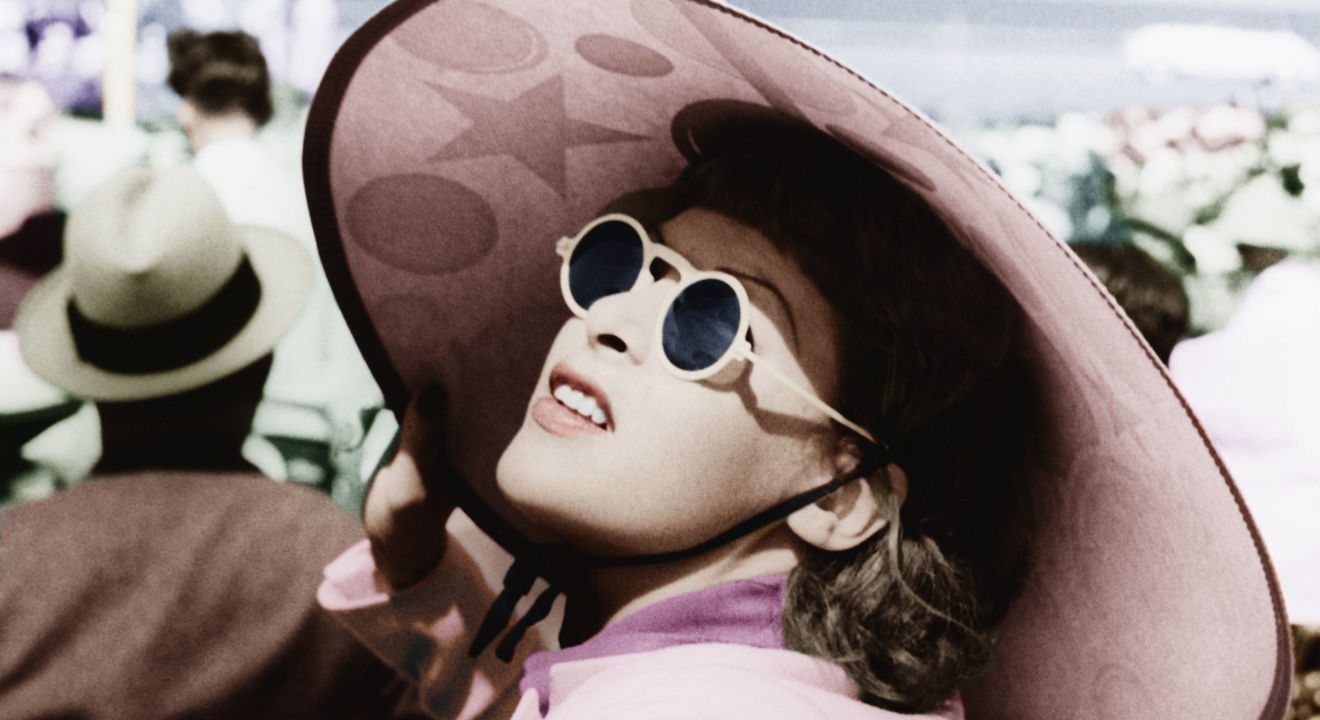Style October 9, 2016


Have you ever wonder how far eyeglasses fashion has come since the days of ancient opera-esque theater binoculars? Where did your favorite rims come from? Are you a woman who rocks rock a modern mod style or a vintage ’50s rendition? For all you bespectacled beauties out there, here’s the breakdown of how eyeglasses fashion has changed over time.
1700s
In the beginning of the 1700s, there were no temple pieces to hold the lenses onto the face. Thankfully, the 1720s finally brought along the handles that made glasses functional. There were four main types of glasses during this time period, all of which were predominantly handmade since mass-production of prescription glasses had not yet begun.
Martin’s Margins were invented by Benjamin Martin in 1760. They had removable circular round lenses and were usually carved from horns or tortoiseshell. Another popular type of glasses in this era were called wig spectacles. They had thinner and more modern-looking rims than Martin’s Margins. The armatures for these glasses were much longer than necessary, as they were usually used as an accessory worn on a wig rather than for actually seeing.
One of the most important innovations in the history of eyeglasses was the creation of bifocals , which were invented by the famous founding father, Benjamin Franklin. They had two lenses for seeing both nearby and far away, depending on the needs of the user. Bifocal lenses are still used to this day.
If you didn’t like wearing your glasses, then scissor spectacles would have been the perfect solution. The lens piece was meant to be held in the hand and could be worn on a chain around the neck. Ornate scissor spectacles were created for those who could afford them, making them both a functional invention as well as an accessory. According to The College of Optometrists, Napoleon Bonaparte used a pair of scissor spectacles and his brother owned a pair gold, engraved scissor spectacles that hung on a twisted gold chain.
1800s
In the 1800s, technology finally arose to meet the needs of the people. With eyeglasses in mass production, customers were able to choose from a small selection of styles. The main style of the 1800s was the lorgnette, or “opera glasses.” With a handle at the side, they became the go-to glasses style for men and women during this century. Different variations that could fold in half or that featured decorative handles were also created.
1900-1920
The lorgnette style of eyeglasses continued to be popular during this time period. They were seen as an acceptable style for women since they didn’t permanently mask the face. In addition to these traditional glasses came the pince-nez (“pinch the nose”) style. They had no handle and were meant to balance on the nose. Chained necklaces and ear loops were used to keep the lens from falling off and breaking.
1920-1930s
Round lenses dominated the styles of the 1920s and 1930s. Producers began to use more tortoise shell, as well as real gold filling to increase the quality and allure of wire-rimmed glasses. In 1937, Ray Ban released the first aviator sunglasses. They were first made for the US Air Force to combat the sunshine while they were flying but became so successful that they were later released to the public as fashion accessories.
1940s-1950s
With the 1940s and 1950s dawned fashionable frame trends. With the emergence of newer styles in this period, glasses became a fashion statement. The most popular style of the 1940s was the “browline.” This style dominated fifty percent of the market at the time. Moving into the 1950s, frames began to adopt newer shapes, such as chunky round or rectangular shapes. In the ’50s, the cat eye style became all the rage in both eyeglasses and sunglasses. They came in a variety of different colors and were decorated with different cabochons. Bulky black-rimmed glasses were also popular in the beatnik culture, influencing the creation of the Ray Ban Wayfarer.
1960s-1970s
The 1960s and 1970s were characterized by two opposing fashion senses, these styles also clashing in the world of eyewear. On one side were the mods, who preferred simple geometric shapes. The color schemes of mod glasses were black and white with bright splashes of color. Iris Apfel-esque bugeye glasses were also popular, as well as the fully dysfunctional “eskimo” glasses. The other style, that of the flower children or “hippies,” included perfectly circular rims with different rainbow colored lenses.
1980s-1990s
The 1980s eyeglasses style perfectly mimicked the funky colorful fashion of the time period. Glasses were oddly shaped and were made to feature different colored lenses. An iconic eyewear style of the time was the “wraparound,” which alluded to a futuristic alien fashion sense. People who subscribed to new wave fashion were known for their intriguing triangular and unusual specs. Wayfarers made a comeback, as well as jewel-studded cat eyes, wire-rimmed ’50s glasses and ’60s mod styles. The 1990s eyewear style was almost completely opposite, favoring simple shapes and colors.
2000s-Present
Unlike previous decades, there is no specific style dominating the eyewear industry in the 2000s. With the revival of vintage fashion, people continue to look to decades past for their favorite styles. Nowadays, there’s an emphasis on the individual fashion sense, and many independent companies are constantly creating a huge range of new styles. According to NASDAQ, the eyewear market is forecast to reach $165 billion in value by 2022. In this huge market, innovation is key. We can’t wait to see what our favorite designers come up with next!
Information for this article taken from the American Academy of Ophthalmology and Daily Worth.